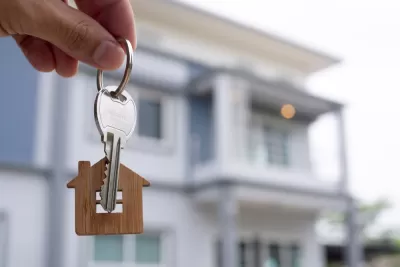Planopedia
Clear, accessible definitions for common urban planning terms.
What Is Supportive Housing?
Supportive housing combines affordable housing with social services providers to help people experiencing homelessness, disability, or other hardships transition to permanent housing.

Permanent supportive housing (PSH), or supportive housing, is a type of housing and social service provision model that emphasizes assisting people experiencing homelessness with a comprehensive package of aid that includes safe, secure, affordable housing, medical care and rehabilitation, and other social services.
Supportive housing can be transitional or permanent, with some facilities aimed at helping people experiencing homelessness get back into permanent housing and others geared toward supporting people with permanent developmental or physical disabilities who need long-term assistance. It can range from a single facility with on-site services to more decentralized approaches that couple scattered housing units with a network of off-site service providers. Some forms of supportive housing are aimed at people with psychiatric or physical disabilities who need daily care and support. Populations served by supportive housing also include the elderly, foster children, people with medical needs, and others.
The federal Department of Housing and Urban Development (HUD) offers grants to organizations and local governments for the construction and operation of supportive housing facilities. According to HUD, “The Supportive Housing program is designed to promote the development of supportive housing and supportive services to assist homeless persons in transitioning from homelessness, and to promote the provision of supportive housing to enable homeless persons to live as independently as possible.” Organizations that offer supportive housing are known as Continuum of Care (CoC). To be eligible for McKinney-Vento Homeless Assistance Grants, COCs are to develop a Coordinated Entry System (CES) to ensure “to ensure that all people experiencing a housing crisis have fair and equal access and are quickly identified, assessed for, referred, and connected to housing and assistance based on their strengths and needs.”
Advocates say supportive housing provides a more comprehensive and sustainable solution than emergency shelters and short-term housing by providing a holistic approach that addresses the many varied factors involved in homelessness. The model helps more people stabilize their housing and financial situation and avoid falling back into homelessness. Similarly, the approach called ‘Housing First’ advocates for providing unhoused people with housing before any other services, arguing that people are more likely to engage in successful recovery or job training if they have safe, secure housing. Studies show that supportive housing works in multiple ways: it improves outcomes for formerly homeless people and families, streamlines service provision, and reduces costs for taxpayers. According to a brief by the U.S. Interagency Council on Homelessness, “…there is a growing body of evidence that people experiencing homelessness can achieve stability in permanent housing when they are provided the appropriate level of tailored services and supports. These approaches are both cost effective and create stronger outcomes.”
Like other shelter and affordable housing projects, supportive housing proposals often encounter opposition from neighbors who express concerns about negative impacts on the surrounding community. Common concerns include: lower property values, crime and drug use, increased loitering, overwhelm of local resources and emergency services, increased traffic, and cost.
Proponents argue that these concerns are generally not backed up by data. Studies show no correlation between the presence of supportive housing facilities and property values, nor between supportive housing and crime. Supporters further argue that supportive housing reduces “loitering” and the presence of unhoused individuals on the street. Many temporary shelters have limited hours, often forcing unhoused individuals back onto the street during the daytime, while supportive housing provides round-the-clock, long-term housing and services. Studies show that supportive housing is often one of the more affordable ways to house people in institutional settings. One 2004 study in New York City cited supportive housing costs at $41.85 per person per day, compared with $164.57 for prisons and $1185 for hospitals. Based on the evidence, supportive housing is an effective and financially viable option for reducing chronic homelessness and assisting individuals and families in transitioning to permanent, stable housing.





























